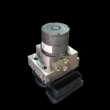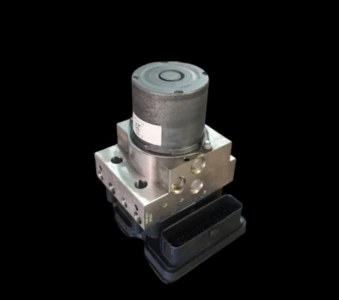Introduction
When it comes to vehicle safety, few systems are as vital as the brakes. They ensure you can stop quickly, avoid collisions, and stay in control on the road. One of the clearest indicators that your braking system might be compromised is the brake system warning light. While it may seem like a minor dashboard signal, it can point to serious issues that require prompt attention.
Understanding what this light means, what causes it, and how to respond can help prevent accidents and keep your car running safely.
What Is the Brake System Warning Light?
The brake system warning light is a red indicator, usually in the shape of a circle with an exclamation mark inside, sometimes accompanied by the word “BRAKE.” It may appear when you first start your car—that’s normal. But if it stays on or lights up while you’re driving, it’s a sign that something isn’t functioning properly in the braking system.
This light is separate from the ABS (Anti-lock Braking System) warning, although in some vehicles, the two systems are interconnected, and both lights may come on together if there’s a serious fault.
Why Does the Brake System Warning Light Come On?
Several issues can trigger the brake system warning light. Some are simple, while others can be dangerous if not addressed.
- Parking Brake Engaged: The most common cause is the parking brake being left slightly engaged. Even a partially applied handbrake can trigger the warning light. Always double-check that it’s fully released before assuming there’s a fault.
- Low Brake Fluid Level: Brake fluid plays a crucial role in transferring pressure from your foot on the brake pedal to the wheels. A low fluid level can indicate a leak, worn-out brake pads, or even evaporation over time. If your fluid level drops below the minimum mark, the light will come on to alert you.
- Worn Brake Pads: As brake pads wear down, the pistons in the brake calipers extend further to maintain contact, which can lower the fluid level in the reservoir. Many modern vehicles have sensors that detect pad wear and trigger the warning light when it’s time for replacement.
- Brake System Leak: A fluid leak anywhere in the system can reduce hydraulic pressure, making braking less effective or even causing complete failure. Leaks are often found around the master cylinder, brake lines, or calipers.
- Malfunctioning Master Cylinder: The master cylinder is the central component of your braking system. If it fails, your brake fluid may not be distributed evenly, leading to loss of pressure and the illumination of the warning light.
- ABS or Electronic Brake Distribution (EBD) Failure: In some vehicles, the standard brake system warning light may also activate due to issues in the ABS or EBD modules. These systems assist braking performance, especially during emergencies, and their malfunction can affect normal operation.
- Electrical or Sensor Faults: In rare cases, the warning light may be triggered by a faulty sensor or damaged wiring. While this may not pose an immediate mechanical threat, it should still be inspected to ensure the system’s accuracy.
What Should You Do When the Brake Warning Light Comes On?
The correct response depends on the situation, but the following steps apply in most cases:
- Pull Over Safely: If the light comes on while driving, find a safe place to pull over. Don’t panic, but don’t ignore the light either.
- Check the Parking Brake: Ensure that the parking brake is fully disengaged. This is often the simplest fix and may resolve the issue immediately.
- Inspect Brake Fluid: Open the hood and locate the brake fluid reservoir. If the level is low, add the correct type of fluid as specified in your vehicle’s manual. Be cautious not to overfill, and avoid spilling fluid on painted surfaces.
- Press the Brake Pedal: With the engine running, press the brake pedal a few times. If it feels soft, spongy, or sinks to the floor, avoid driving any further. This could indicate air in the lines or a significant leak.
- Call for Professional Help: Even if you’re able to temporarily turn off the light, it’s essential to have a technician inspect the entire braking system. Some problems may not show obvious symptoms until they become dangerous.
Can You Drive With the Brake System Warning Light On?
Driving with the brake warning light on is generally not recommended. While a partially engaged handbrake might not be dangerous, low fluid, a leak, or hydraulic failure can lead to complete brake loss. Unless you’re certain the issue is minor, have the vehicle checked before continuing to drive.
If the light comes on along with other symptoms—such as unusual noises, reduced braking power, or vibrations—stop immediately and call for roadside assistance.
Tips for Preventing Brake System Issues
Brake-related problems often develop gradually. With regular maintenance, you can catch them early and avoid major failures.
- Check brake fluid monthly and before long trips.
- Replace brake pads before they wear too thin.
- Bleed and replace brake fluid as recommended by your manufacturer.
- Watch for changes in brake performance or noise.
- Get annual brake inspections by a certified technician.
Taking proactive steps can not only extend the lifespan of your braking system but also ensure your safety and that of others on the road.
Conclusion
The brake system warning light is more than just a symbol—it’s a vital alert that something in your vehicle’s most important safety system requires attention. Whether it’s low fluid, a worn-out component, or an electrical issue, the light is telling you not to ignore your brakes.
Understanding the reasons behind the warning and taking appropriate action can help you avoid accidents, costly repairs, and dangerous driving conditions. In matters of braking, it’s always better to be cautious than sorry.










